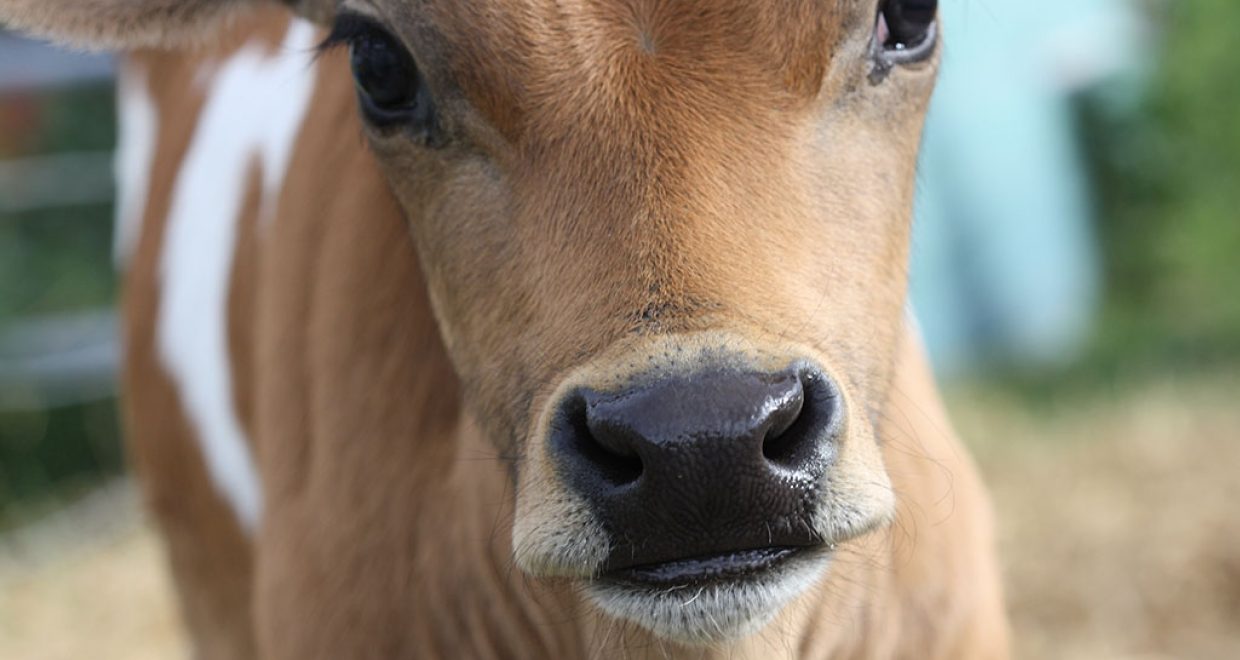Colostrum provision to dairy calves
The animal article of the month for November is “Transfer of passive immunity in dairy calves: the effectiveness of providing a supplementary colostrum meal in addition to nursing from the dam” by Lora et al.
Due to the particular structure of the bovine placenta, calves are born nearly devoid of antibodies, and therefore they strictly depend on immunoglobulin (Ig) absorption from maternal colostrum to acquire sufficient immune protection. Inadequate colostrum administration leads to “failed transfer of passive immunity”, a condition that has detrimental effects on calf health and survival.
For dairy calves, which are usually early separated from the dams after birth, colostrum is administered by the herdsmen. The gold standard rules for colostrum provision in order to avoid failed transfer of passive immunity are (i) administering colostrum within 6 h of birth, (ii) in an adequate amount (at least 4 L), and (iii) of good quality (at least 50 g/L of Ig). Besides the quality, the main issue in colostrum management for dairy calves is the amount fed within a few hours of birth, representing one of the leading reasons why the failed transfer of passive immunity still remains a widespread problem in dairy farming.
Improving the amount of colostrum provided to the calves soon after birth often requires additional work for the herdsmen, which means more time spending for calf assistance. Allowing the calf to nurse colostrum freely from the dam should lead to greater colostrum consumption within few hours of birth and to improved intestinal absorption of Ig. On the other hand, leaving the calf with the dam is a high-risk practice for biosecurity reasons in dairy farms, and it is well known that a considerable number of dairy calves may fail in successfully reaching the teats within 6 h of birth. Therefore, the aim of this study was to investigate whether the advantages of colostrum provision through dam nursing can be exploited at dairy farms while avoiding its disadvantages by managing newborn calves with their dams for the first day after birth with specific farmer assistance.
The level of passive immunity transfer was tested in calves that were separated from the dam immediately after birth and fed colostrum by nipple-bottle and compared with calves that were allowed to nurse colostrum freely from the dam for the first 12 h of life without farmer assistance or receiving a supplementary colostrum meal by nipple-bottle within 6 h of birth. The provision of a supplementary colostrum meal to the suckling calves proved to be an effective practice in maximizing the transfer of passive immunity, leading to the lowest occurrence of failed transfer of passive immunity and the greatest level of calf serum Ig concentration compared with both the other groups.
The strategy tested, therefore, combined the advantages of both the assisted provision of colostrum and the possibility of nursing from the dam several times per day without requiring additional work for the herdsman. On the other hand, there was evidence that calf-dam separation distress could be high, and therefore the best practices to mitigate this distress should be identified.
The animal article of the month for November is “Transfer of passive immunity in dairy calves: the effectiveness of providing a supplementary colostrum meal in addition to nursing from the dam” is freely available for a month.
Authors: I. Lora, F. Gottardo, L. Bonfanti, A. L. Stefani, E. Soranzo, B. Dall’Ava, K. Capello, M. Martini, A. Barberio
The animal Article of the Month is selected by the Editor-in-Chief and is freely available for one month. View the recent selections






